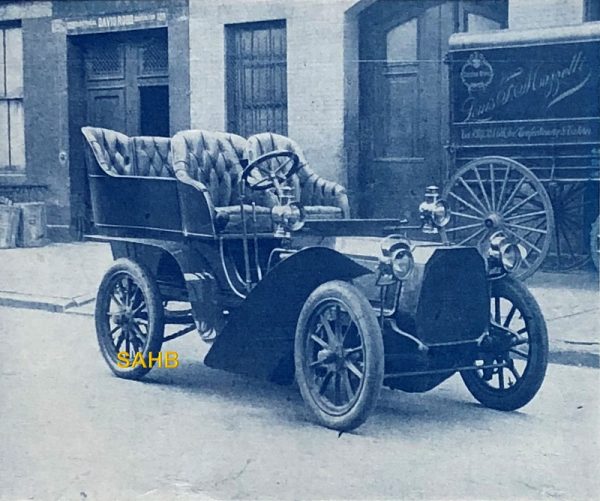
The Moyea car may only have been built between 1903 and 1904 but the history of Moyea and its successors takes us to no fewer than fourteen American marques and ends up with Chrysler.
The Moyea car (its name thought to mean ‘swift running’ in a native American language) was manufactured in that short period by the Moyea Automobile Company, a firm founded in 1903 in Middletown, Ohio and headed by Henry Cryder. Its headquarters were in New York, and the cars were initially going to be built in Middletown but finally the factory was located in the town of Rye (New York).
The Moyea was a French-designed car manufactured under licence from Rochet-Schneider. The bodies were built by the Springfield Metal Body Company of Springfield, Massachusetts, and the chassis were ordered from the Alden Sampson Manufacturing Company of Pittsfield, Massachusetts.
The car was equipped with a powerful 16hp 4-cylinder water-cooled engine and had a 4-speed transmission and chain drive. The firm’s only model was a 5-passenger tonneau-type car with rear entry. The Moyea was said to stand out for its mechanical simplicity, its beautiful woodwork, its impeccable finish and its Gray & Davis lamps.
The Moyea Automobile Company did not disappear in 1904. Instead, it changed its name to the Consolidated Motor Company. The chassis builder Alden Sampson was so impressed by the Moyea car that he bought the Consolidated Motor Company to obtain a licence from Rochet-Schneider and began production of the Moyea cars in Pittsfield under the Alden Sampson name. Very few of these cars were made, as Alden Sampson turned very quickly to truck manufacture under the Sampson name. At the 1904 New York Auto Show, the Alden Sampson car, the Moyea car, and a Sampson truck were shown on the same stand.
Now enters the personage of Benjamin Briscoe, a successful industrial entrepreneur and automobile pioneer. He had helped to finance David Buick’s car in 1901 and by 1910 he ran Maxwell-Briscoe, makers of the Maxwell. Having failed to consolidate Ford, Buick, REO and his own company, he founded the United States Motor Company to help save several independent manufacturers who were having difficulty getting the financial backing they needed. Thus, by 1910 or soon after, USMC had under its wing the makers of these marques: Brush, Dayton, Alden Sampson, Columbia (the very same make that appeared in Snapshot 386), Riker, Briscoe, Detroit, Thomas, Sampson, Stoddard, Courier, Maxwell, Providence and Gray Marine.
In 1911 Briscoe decided that the Sampson name would be applied to a new car. This did not last long. In September 1912 USMC went into receivership and the Sampson car was no more. Briscoe retired, and the USMC assets were bought by Walter Flanders, who reorganised Maxwell, the only surviving member of the group, as the Maxwell Motor Company, Inc. In the early 1920s this company was reorganised again and became Chrysler.
Image courtesy of The Richard Roberts Archive: www.richardrobertsarchive.org.uk







Leave a Comment